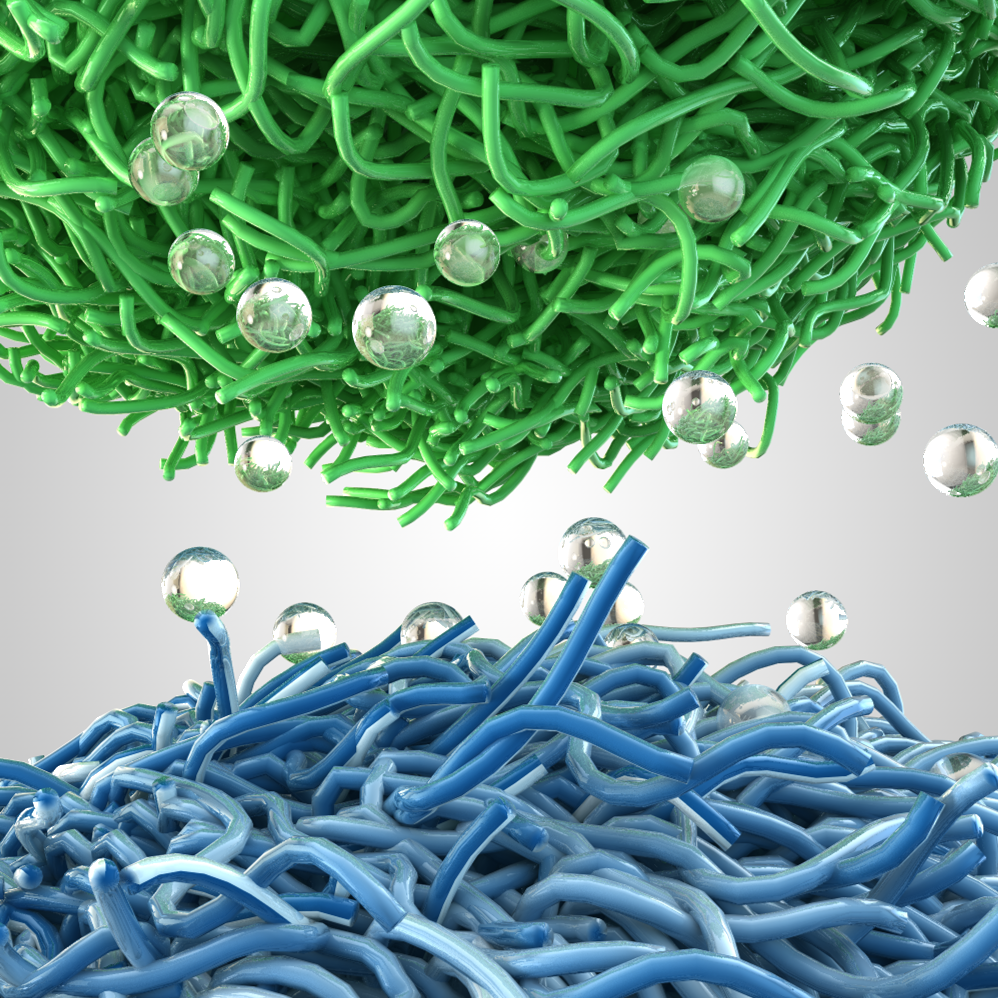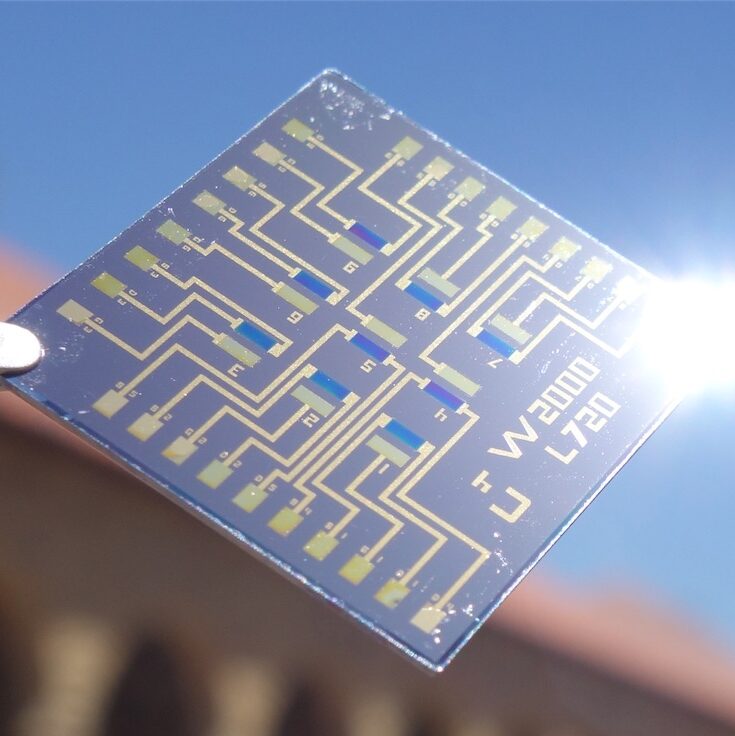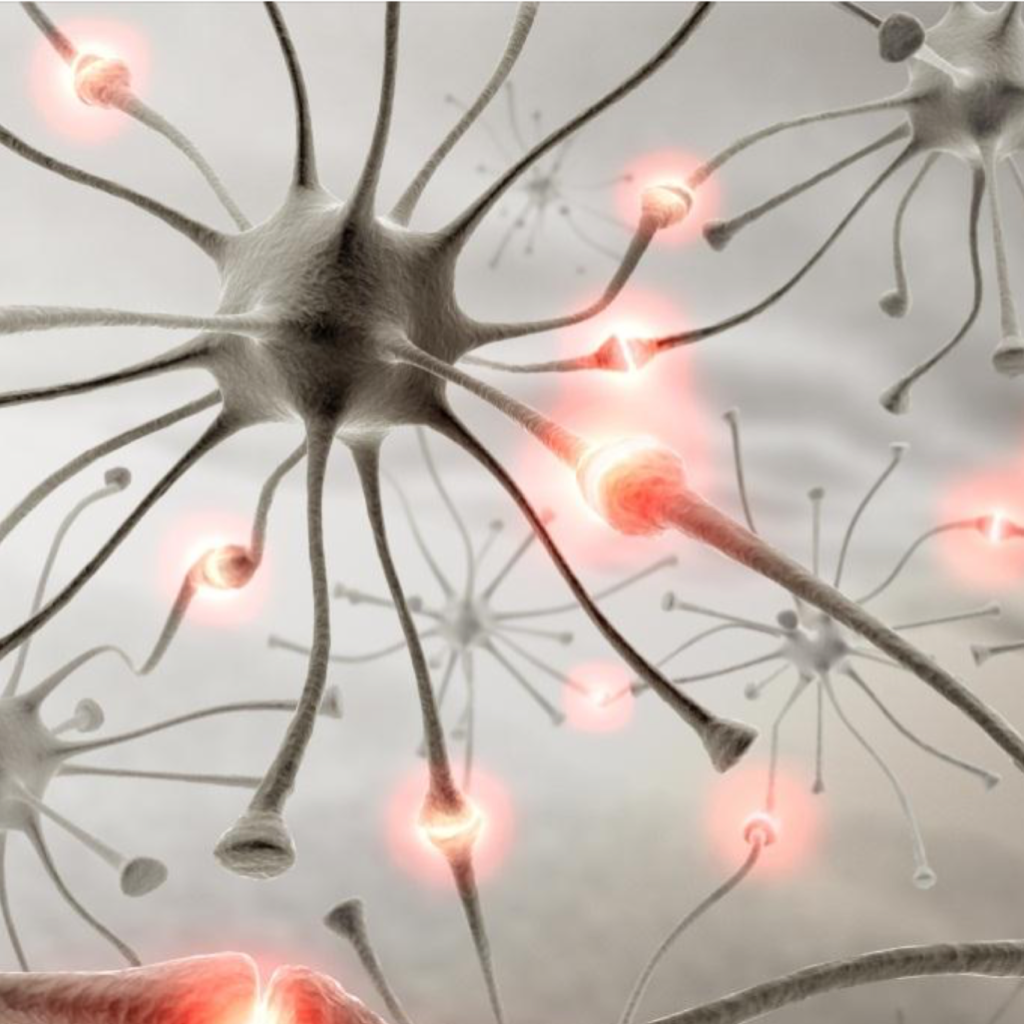The Neuromorphic Engineering group focuses on the development and integration of organic electronic and neuromorphic materials for applications in adaptable bioelectronics, sensors and brain-inspired smart point-of-care diagnostic devices.
Neuromorphic computing could address the inherent limitations of conventional silicon technology in dedicated machine learning applications. Recent work on large crossbar arrays of two-terminal memristive devices has led to the development of promising neuromorphic systems. However, delivering a compact and efficient parallel computing technology capable of embedding artificial neural networks in hardware remains a significant challenge.
The use of organic materials opens up possibilities in flexible, low-cost and low-energy neuromorphic computing. On top of that, the easy acces to a large linear and symmetric conductance range of these materials and devices offer opportunities for efficient implementation of hardware-based neural networks such as vector-matrix multiplication.
At the moment our research consists of optimising the material systems, stability and processability. At the same time we aim to develop a large (crossbar) array of organic neuromorphic devices to perform some basic neural network calculations.
We focus on developing and optimising state-of-the-art organic neuromorphic devices that are based on novel organic mixed-ionic electronic materials. Unique properties such as low voltage and low energy operation allow implementation of these devices in trainable biosensors and smart autonomous robotics. In fact, a large part of our research is focused on the implementation of these smart and adaptive neuromorphic materials in real-life applications. To this end, we follow three research lines:
Organic neuromorphic devices
Brain-inspired computing based on existing CMOS technology has revolutionised the fields of data analytics and pattern recognition but has yet to achieve the interconnectivity and energy efficiency of the brain. We provided the first demonstration of a flexible low-energy organic artificial synapse that has many available conductance states (van de Burgt et al. Nature Materials 2017), thereby outperforming and existing technology and has opened the door to the completely new field of Neuromorphic Computing. We have reviewed and proposed relevant metrics to further the field (van de Burgt et al. Nature Electronics 2018 and Gkoupidenis et al. Nature Reviews Materials, 2023). We have shown that our organic neuromorphic devices can be optimised for speed (Keene et al. Journal of Physics D, 2018) and stability (Keene et al. Advanced Electronic Materials 2018) and can be doped to act as low-power stable enhancement mode devices (Keene et al. Advanced Materials 2020).
Novel materials systems can be developed that have particular properties useful for neuromorphic and adaptive systems. We have demonstrated and optimised (Zhang et al.Advanced Functional Materials, 2022) a novel polymeric system and shown its capabilities in adaptive sensing circuits and neuromorphic devices (Zhang and van Doremaele et al. Advanced Materials 2022)
Bioelectronics and Adaptive Interfaces
Our collaboration with the Salleo lab also extends further into the fast developing field of organic electronics. Specifically, organic electrochemical transistors (OECTs) are being investigated. Our group is interested in the broad field of electrochemical transistors for specific applications such as sensors or implants.
Due to their biocompatible and flexible nature, organic electronic materials have the potential to operate at the interface with biology. We are working on novel architectures with bio-inspired features, offering promising solutions for the manipulation and the processing of biological signals (bioinformatics) and potential applications, such as brain-computer-interfaces. In collaboration with the Santoro Lab at IIT in Naples, we showed neuromorphic devices interfaces with neuronal cells can locally monitor and store information of neurotransmitter release (Keene et al. Nature Materials, 2020). This allows for adaptive bio-interfaces that can be modulated by the physiological environment. We are currently also investigating artificial neural pathways and neural cleft
Our research collaboration with Santoro Lab at RWTH Aachen and IIT in Naples also involves the investigation and enhancement of biological cells with (organic) substrate and interfaces. Using a specially developed FIB/SEM method we are able to visualize the cell material interaction in high resolution. With nanostructures, such as nanopillars or grooves we can enhance the attachment of cells even further. We can link the electrochemical response of our devices to this attachment to the highly interesting electrical properties of the cleft between the cell and substrate. Furthermore, tuneable materials can be used to locally adapt the connection strength with cells or tissue, enabling hybrid biological memory devices.
Intelligent sensor applications and smart robotics
Despite the vast amount of information available at the physiological level, to date no smart and integrated bioelectronic circuits exist that can locally adapt to and process information. We are investigating applications requiring local real-time processing of biological and physiological data by integration of bioelectronic circuits with neuromorphic systems to provide rapid on-site processing and classification of biosignals and generate relevant optimized actions such as drug delivery or prosthetic movements (van Doremaele et al. J. Mat Chem. C 2019).
With the Gkoupidenis Lab at the Max Planck Institute in Mainz, our group works on smart and autonomous robotics. Using low-voltage and low-power organic devices we have created fully autonomous robotics that can be operated without external control and learn to find their way in a maze (Krauhausen et al. Science Advances 2021).




0 Comments